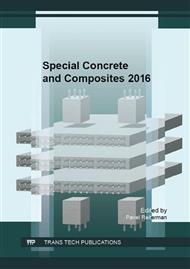p.207
p.216
p.222
p.228
p.235
p.241
p.247
p.254
p.260
Application of Non-Destructive Methods for the Determination of Microstructural Parameters of Recycled Asphalt Concrete in Track Bed
Abstract:
The extent of the use of asphalt concrete in track bed layers is minimal in contrast to the application of granular materials mostly represented by coarse/fine crushed stone mixture. This article summarizes advantages and disadvantages of the use of asphalt concrete in the track bed construction and provides relevant literature research. The main part of this article focuses on the application of recycled asphalt concrete (so called R-material) in the track bed layer and its following non-destructive X-ray Micro Computed Tomography Method (Micro-CT) for the description of its structural parameters. The contribution of this research is based on the evaluation of the air void and soluble binder content of chosen recycled asphalt concrete. First, it was obtained from laboratory geotechnical models of a railway track, and then from the following implementation in a trial section of an operating railway track. The conclusion contains results of the R-material practical application and findings from Micro-CT.
Info:
Periodical:
Pages:
235-240
Citation:
Online since:
December 2016
Authors:
Price:
Сopyright:
© 2017 Trans Tech Publications Ltd. All Rights Reserved
Share:
Citation:


